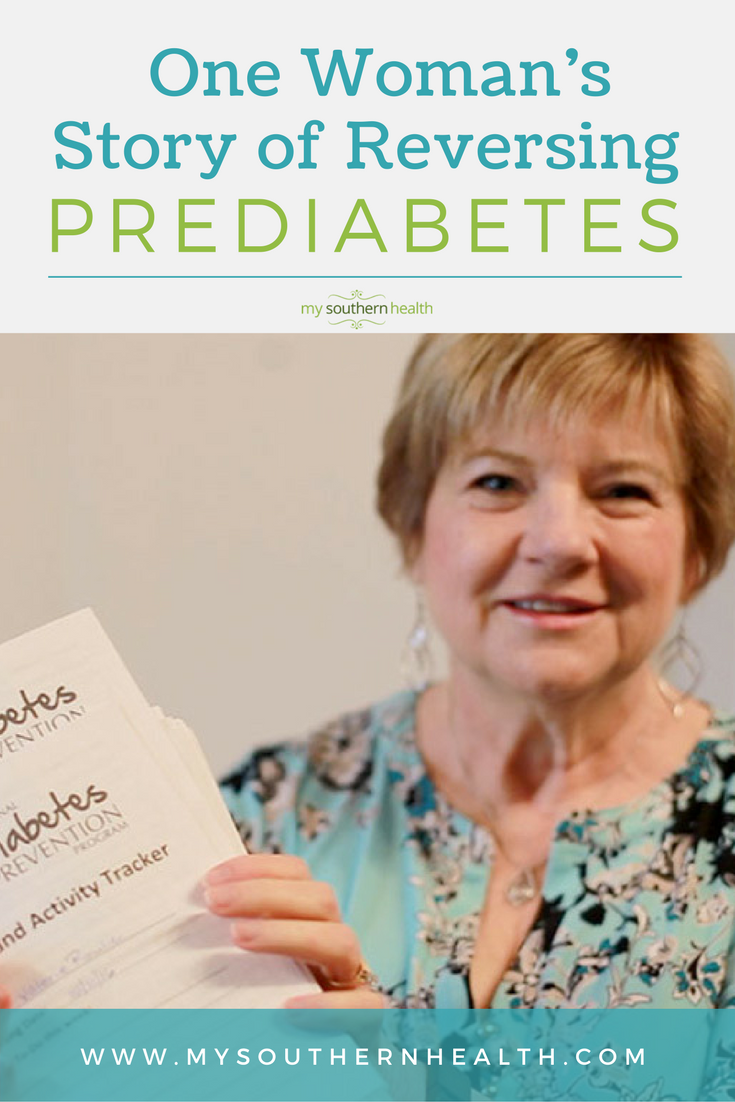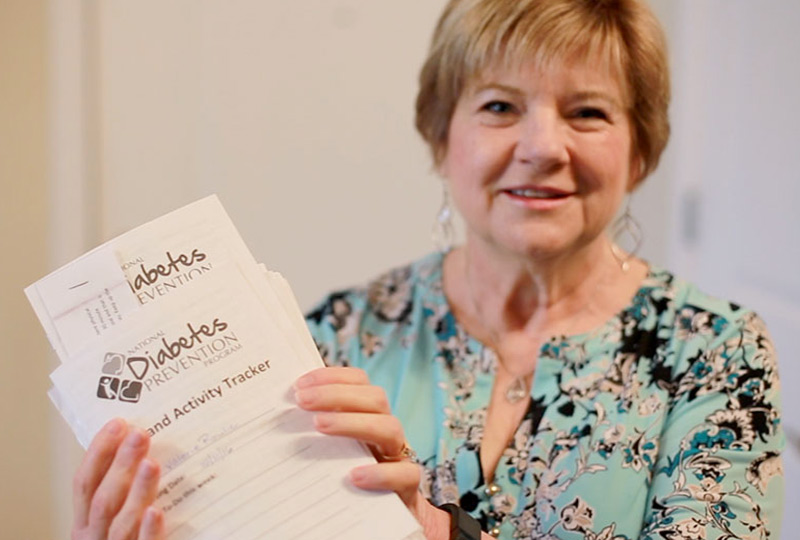One of our favorite prediabetes success stories includes lifestyle overhaul and the help of a program focused on manageable change.
When Val Roulic was diagnosed with prediabetes, she was at a medical crossroads traveled by 86 million Americans. She could get more physically active and lose weight — or face the possibility of developing full-blown type 2 diabetes. Like many, she was left wondering what to do to reverse prediabetes.
Prediabetes is when blood sugar levels are consistently higher than normal, but not as high as in type 2 diabetes. It is a warning sign that the body is losing the ability to regulate blood sugar.
With type 2 diabetes, the body either doesn’t produce enough insulin, the hormone that controls moving sugar – glucose— out of the bloodstream and into cells, or the body resists insulin’s effects, so blood sugar levels stay too high.
Most Americans with prediabetes don’t even know they have it. Learning they do can be scary. Developing type 2 diabetes puts you at significant risk for serious health problems. Diabetes is the leading cause of kidney failure, lower-limb amputation and adult-onset blindness.
The good news is that people can reverse prediabetes naturally with lifestyle changes and a formal program focused on health improvements.
A prediabetes diagnosis led to big changes
Roulic was overweight and taking medication for high blood pressure. She tried to lose weight on her own but, like many people who diet, her weight was like a yo-yo, going down and up.
Learning she had prediabetes, however, was a powerful motivator.
“I wasn’t about to wait until I got diabetes, because I didn’t want the suffering that comes with the disease,” she said.
Roulic learned about the Centers for Disease Control and Prevention’s year-long Diabetes Prevention Program. It helps people achieve health changes, with lasting results. There are currently more than two dozen cities in Tennessee with the program available to the public, and hundreds of locations across the South. Roulic joined the program Vanderbilt University Medical Center offers its faculty and staff through the Health Plus health and wellness program.
Roulic said this program was enormously helpful for learning how to build a lifestyle that enables healthy blood sugar levels and weight loss. She lost 60 pounds during this program! Many months later, she has kept the weight off.
Gradual changes for overall health
The Diabetes Prevention Program isn’t a diet. Rather, it teaches people how to eat more healthfully, become more physically active and reduce stress. All of those help reduce the risk of developing type 2 diabetes, not to mention heart disease or the risk of a stroke. Other benefits of the program include group support, individual support from a coach, and practicing mindful eating.
“It’s a lifestyle change,” Roulic said. “They taught us how to eat, how to get active and gave us road signs along the way for motivation. There is a camaraderie at the classes that keeps you on track.”
A particularly helpful strategy for Roulic that the class encouraged was tracking her eating with a food diary. It was her way to keep herself honest about when and how she ate and the numbers on her scale. Tracking her eating stopped the weight-loss yo-yo.
“It was just one of the things that clicked with my personality,” she said. “Writing it down helped me realize all times I was snacking,” she said.
Reversing prediabetes with exercise
Exercise was also key to her weight loss. Roulic learned to work physical activity into her routine, despite a time-consuming daily commute. The diabetes prevention program teaches people how to accomplish this within busy schedules, and increase their activity levels gradually.
“Getting started with exercise – there are a lot of barriers there,” said Marissa Wertheimer, the Vanderbilt health coach who worked with Roulic. “A lot of people are finding any excuse to not do it.” Wertheimer tells clients to add variety to their exercise routine, and “find something you enjoy, and that you look forward to doing. Because that’s the best way to stay motivated.”
The Diabetes Prevention Program grew out of a landmark study showing that eating more healthfully, losing weight and getting modest physical activity could reverse prediabetes.
Losing just 7 percent of body weight, which is just 14 pounds for a 200-pound person, and 30 minutes of moderate activity five days a week could reduce chances of developing type 2 diabetes by 58 percent. Those older than 60 reduced their risk by 71 percent.
“I lost 60 pounds and I’m still losing weight, and my blood sugar is back in the normal range,” Roulic said. “And I was able to get off my blood pressure medicine.”
“There’s a saying: ‘Nobody said it would be easy. Just worth it.’ And it is,” Roulic said. “I feel like a kid again! This is just wonderful.”
Who is at risk for prediabetes?
Most of the 86 million Americans who have prediabetes are unaware of it. People with these risk factors are at higher risk than others for prediabetes and type 2 diabetes:
- Being overweight;
- Being 45 years old or older;
- Having a parent or sibling with type 2 diabetes;
- Being physically active fewer than 3 times per week;
- Having given birth to a baby weighing more than 9 pounds;
- Having a history of diabetes while pregnant (gestational diabetes);
- Being African-Americans, Hispanic/Latino Americans, American Indians, Pacific Islanders, and some Asian-Americans, who are at particularly high risk for type 2 diabetes.
How likely are you to have prediabetes? Use this CDC screening test to find out.

The Vanderbilt Eskind Diabetes Center is one of only three diabetes centers in the U.S. accredited by the American Diabetes Association for treating adult, children’s and gestational diabetes. For appointments, reach the center here.

